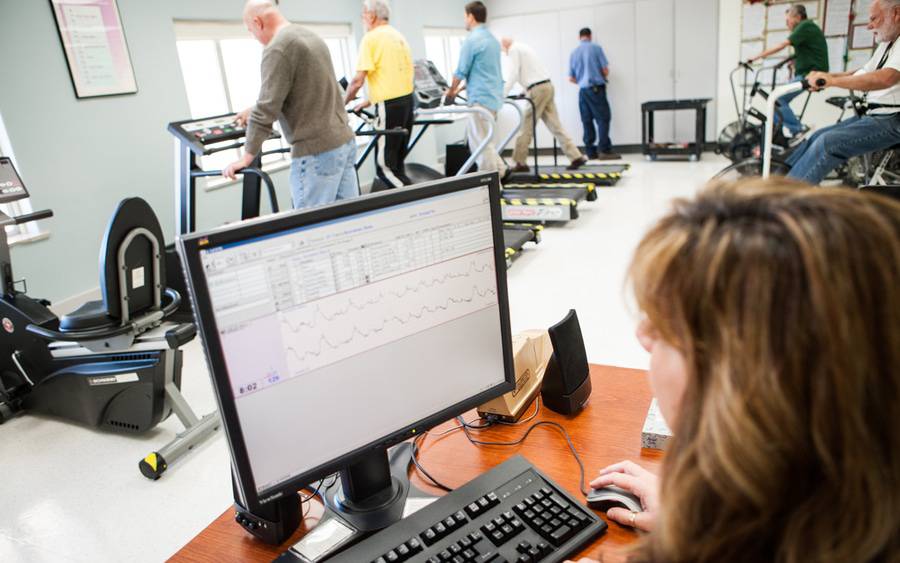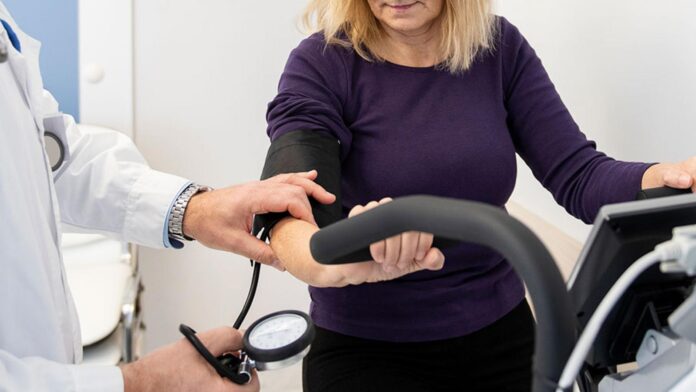Navigating the challenges of cardiac rehabilitation can be a daunting task, especially for those who have no prior experience. Thankfully, with the right knowledge and support, it is possible to understand and overcome these obstacles.
From identifying risk factors associated with heart conditions to finding resources to help manage symptoms or participating in a supervised program tailored specifically to your needs – there are many paths you can take on your journey to recovery. With guidance and understanding from healthcare professionals as well as family and friends – navigating these challenges does not have to be an overwhelming experience.
Learn more about how you can make informed decisions on behalf of your health today!
Understanding the Benefits of Cardiac Rehabilitation
Cardiac rehabilitation has been gaining attention in recent years as an important component of recovery for individuals with heart disease. It is a comprehensive program that involves medical management, exercise training, and behavioral modification to improve the health and quality of life of those affected by cardiac conditions.
Understanding the benefits of cardiac rehabilitation can help patients make informed decisions about their treatment and lifestyle choices. The primary benefit of cardiac rehabilitation is improved physical function after a cardiovascular event or surgery.
Through supervised exercise programs, patients gain strength, endurance, balance, flexibility, and overall fitness levels while reducing their risk for future complications or events such as stroke or heart attack. Additionally, psychological benefits can be obtained through increased confidence in one’s ability to remain active despite prior diagnosis or surgical procedures performed on the heart.
A secondary benefit of participating in cardiac rehab includes better dietary habits due to nutrition education sessions provided during the program. Patients are taught how to read food labels and select healthier options when shopping as well as encouraged to maintain a balanced diet including fruits, vegetables, and whole grains which helps reduce cholesterol levels over time leading to better long-term health outcomes.
Finally, yet importantly, regular participation in cardiac rehab also provides participants with social support from other people facing similar issues who understand what they are going through both emotionally and physically. The sense of solidarity among peers experienced during group exercises, educational classes, counseling sessions, etc.
, reinforces healthy behavior changes enabling them to stay motivated throughout their journey toward optimal well-being.
Establishing a Plan for Successful Cardiac Rehabilitation
 Source: clinicalconnection.hopkinsmedicine.orgWhen it comes to establishing a plan for successful cardiac rehabilitation, it is important to be aware of the challenges that can arise. Proper planning and education are key components in navigating these obstacles and achieving success.
Source: clinicalconnection.hopkinsmedicine.orgWhen it comes to establishing a plan for successful cardiac rehabilitation, it is important to be aware of the challenges that can arise. Proper planning and education are key components in navigating these obstacles and achieving success.
Patients need to have an understanding of their specific condition as well as how the treatments will affect them. It is also beneficial for patients to work with healthcare professionals who are experienced in dealing with heart diseases and understand their individual needs.
To ensure long-term success, establishing a comprehensive plan tailored specifically toward each patient’s goals should be addressed first. This plan should include physical activity guidelines, dietary restrictions, medication management strategies, stress reduction techniques, and lifestyle changes that address risk factors such as smoking or obesity.
Additionally, those undergoing cardiac rehabilitation must stay motivated by setting achievable goals throughout the process so they can measure progress along the way. Finally, communication between all involved parties – including family members or caregivers – is essential for successful outcomes during cardiac rehabilitation programs; this helps build trust between patients and medical staff while providing additional support when needed.
With proper guidance from knowledgeable healthcare providers combined with commitment from both patient and care team alike, navigating the challenges of cardiac rehabilitation becomes much more manageable on one’s journey towards improved health outcomes over time.
Identifying Appropriate Exercise and Activity Levels During Cardiac Rehabilitation
Cardiac rehabilitation (CR) is an important part of managing a heart condition. It involves lifestyle changes, such as diet and exercise, that can help improve physical health and reduce the risk of further cardiac events.
Identifying appropriate levels of activity during CR can be challenging, however. Exercise must be tailored to individual needs and abilities while still providing enough intensity to promote effective recovery from a cardiac event or surgery.
The patient’s medical history should inform their exercise plan; for example, those with more advanced coronary artery disease may need to start at lower levels of exertion than healthy individuals. Working with healthcare professionals is essential to determine an appropriate level of activity based on the individual’s overall health status.
Ultimately, proper identification and monitoring of exercise goals are key components for safe participation in CR programs.
Enhancing Nutrition Habits to Maximize Results from Cardiac Rehabilitation
 Source: www.scripps.orgCardiac rehabilitation is a powerful tool for improving the health and well-being of those who have suffered from cardiac events. However, navigating the complexities of this process can be difficult, especially when it comes to dietary changes.
Source: www.scripps.orgCardiac rehabilitation is a powerful tool for improving the health and well-being of those who have suffered from cardiac events. However, navigating the complexities of this process can be difficult, especially when it comes to dietary changes.
Enhancing nutrition habits is an important step in maximizing results from cardiac rehabilitation. Achieving better nutrition starts by understanding what nutrients are essential for good heart health.
Eating foods that are rich in vitamins and minerals such as Omega-3 fats, magnesium, potassium, fiber, and antioxidants will help improve overall cardiovascular function while aiding in recovery from cardiac events. Additionally, eating meals with proper portions and limiting processed foods high in sugar or salt can reduce risk factors associated with poor diet choices.
Swapping out unhealthy snacks for more nutritious options is also key when embarking on a journey of improved nutrition habits. For example, choosing fresh fruits instead of candy bars or whole grain crackers instead of chips can make a significant difference over time.
Furthermore, cutting back on sugary beverages like sodas and replacing them with water or green tea can help increase energy levels while reducing inflammation throughout the body which will ultimately benefit patients undergoing cardiac rehabilitation treatment plans. Finally, engaging in regular physical activity alongside improved nutritional practices has been proven to be beneficial during times of recovery from cardiac events.
Staying active through walking, jogging, swimming or other activities helps build strength which supports progress made during rehab sessions. It also reduces stress levels which makes it easier to stay committed to long-term lifestyle changes related to enhanced nutrition habits.
Managing Stress, Anxiety, and Depression During Cardiac Rehabilitation
Cardiac rehabilitation can be a stressful and anxiety-inducing experience. Not only is it physically demanding, but the emotional toll of managing a chronic heart condition can be difficult to manage as well.
Its important for those undergoing cardiac rehab to have access to resources that will help them cope with the psychological impact of their diagnosis. Strategies such as mindfulness meditation, deep breathing exercises, and cognitive behavioral therapy can all help patients navigate the challenges of cardiac rehabilitation by reducing stress levels and promoting positive mental health.
Additionally, connecting with support groups or talking with a counselor who specializes in helping individuals with chronic conditions can provide additional comfort during this time. With these strategies in place, patients are better equipped to handle any feelings of sadness or depression that may arise during their recovery journey while still taking part in an effective program that supports physical healing.
Conclusion
Cardiac rehabilitation is a crucial part of the recovery process for those with heart disease. Navigating the challenges that come along with cardiac rehab can be difficult, however, understanding your treatment plan and taking an active role in your care will help you to manage these difficulties.
With assistance from healthcare professionals such as Kardiologie cardiologists and physical therapists, one can create a successful plan to ensure full recovery and improved quality of life. It is important to remember that although there may be obstacles along the way, by adhering to best practices during cardiac rehabilitation patients can rest assured they are on their path back to good health.
 Source: www.parkview.com
Source: www.parkview.com





